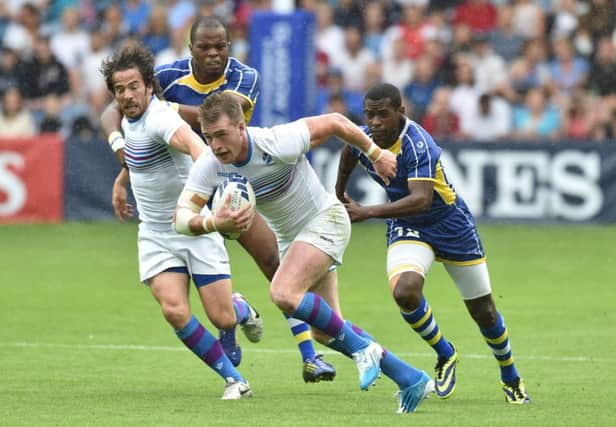Gregor Townsend: Momentum factor in momentous match


Our 34-34 draw with Leinster at the RDS had just about everything – cracking tries, controversial moments, courageous defence, and a pace and intensity that wasn’t far off Test Match level.
The ball in play time, at 52 minutes, was the highest we have had this season and also much higher than many years ago when I played, when some games averaged around 20-25 minutes.
Advertisement
Hide AdAdvertisement
Hide AdThe last play lasted four minutes and 24 seconds and you could tell that, at the final whistle, when Henry Pyrgos kicked the ball into touch, both teams had used up most of their battery power.
In sport, games are often won by the team that controls the intangible that is momentum, and our encounter with Leinster on Friday night was all about momentum.
We had most of the momentum in the first half, building pressure on Leinster and executing pretty well when we got into the scoring zone to go into a 27-7 lead at half-time.
In the second period we lost momentum to the Irish side immediately after the restart, then tried to wrestle it back on a number of occasions before finally taking control of the game again in the last quarter and drawing level.
Management of momentum is a really intriguing concept for me and what we can do as a group to be in control of this vital factor in winning a rugby match.
The influence a coaching group can have on controlling momentum varies from sport to sport. American sports such as the NFL is very coach-dominated as they call each play, and two players on each team even have receivers in their helmets to hear the coaches’ instructions during games. Other sports such as the NBA and the NHL have the use of timeouts and multiple substitutions for a coach to change tactics and personnel in an attempt to control momentum.
At the other end of the scale are individual sports like golf and tennis, where a coach has a more limited role. The goal will be for a coach to create an environment where the player can improve and make adjustments in practice, but there is no coach interaction during play.
I love watching tennis, as for me it is more than any other sport a game of momentum. There is no clock to end a game, and the scoring system is such that, even if one player is dominant, the score continually resets to zero after each game then again after a set is won.
Advertisement
Hide AdAdvertisement
Hide AdWinning at the highest level in tennis must be as much a psychological battle than just being the better tennis player, as there are often multiple momentum swings during a match.
So rugby probably sits closer to basketball, ice hockey and football in terms of the coaching influence on the outcome of the game. Team selection, organisation and establishing an appropriate gameplan are led by the coaches, then ownership is transferred to the players as we get closer to game day.
At half-time there is an opportunity to make tactical adjustments and emphasise certain points and, as the second half progresses, a coach can make tactical changes through the messages he passes on to the players and the use of replacements.
Ultimately, though, it is the players who decide how the team plays by how they deliver their own individual performances and how they anticipate and react to events which unfold during the game.
Control of momentum can be very difficult when you’re playing against a top side who can counteract your best-laid plans, or there could be decisions that go against you, injuries, sin-binnings and errors you hadn’t anticipated making. All these elements occurred in Dublin on Friday night and allowed Leinster to come storming back into the game after the interval.
I felt we did very well after conceding the try at the beginning of the second half as for the next ten minutes the game was evenly contested, but losing Niko Matawalu to the sin-bin gave Leinster an added incentive to up their attack and, obviously, extra space on the field to exploit, which they did very well.
With 14 points conceded in this ten-minute period and a passionate crowd willing on the home team, it looked like the momentum could be with Leinster until the end. However, it was very pleasing to see our players work hard to seize back the control of momentum once again.
It was great to see Peter Horne execute a fantastic pass for Glenn Bryce’s try and even better to kick a touchline conversion to bring us level. His effort throughout the game was outstanding and that was one of his best in a Warriors jersey.
Advertisement
Hide AdAdvertisement
Hide AdWe also had two opportunities near the end of the match after line breaks by DTH (van der Merwe) and Tommy (Seymour), as the team kept looking for ways to record what would have been a fantastic win.
The draw, though, especially with the bonus, puts us in a really good position as we enter the last four games of the league campaign, which we know will be very tough games for us. We know it’s going to take even more effort and determination this time round as we have some tough games coming up, but we are looking forward to seeing the team in action as we enter these defining weeks of the league campaign.
FOLLOW US
SCOTSMAN TABLET AND MOBILE APPS